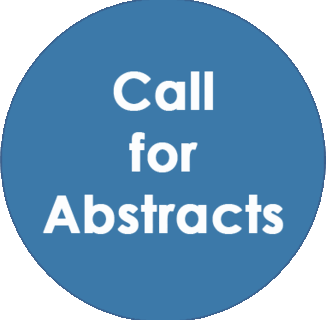Major Sessions
Session 01: Physics
Physics is the study of matter, energy, and the fundamental forces that govern the universe, ranging from the smallest particles to the vastness of space. It encompasses a wide range of topics, including quantum mechanics, which explores the behaviour of particles at the atomic scale, and relativity, which examines the nature of space and time. Through both theoretical models and experimental techniques, physics seeks to understand the underlying principles that explain natural phenomena, driving technological advancements and contributing to our comprehension of the cosmos.
Related Conferences: Physics Conferences | Quantum physics Conferences | European physics Conferences | Top physics Conferences | Applied Physics Conferences | Semiconductor Physics Conferences | Quantum Mechanics and Relativity Conferences | physics Meetings | American physics Conferences
Worldwide Associations and Societies: American Physics Association | Association for Physics | Association of Applied Physics | International Association of Semiconductor physics | World Physics Association | Indian Physics Society | Astrophysics America | Quantum Physics and Relativity Association of America | Physics Institute | International High-Energy Physics Foundation
Session 02: Applied physics
Applied physics bridges the gap between fundamental physics principles and practical applications, focusing on the utilization of physical concepts to solve real-world problems and develop new technologies. This field encompasses a diverse range of applications, from designing advanced materials and improving electronic devices to developing medical imaging techniques and enhancing energy systems. By leveraging theoretical knowledge and experimental techniques, applied physics drives innovation across various industries, contributing to advancements in fields such as telecommunications, renewable energy, and biomedical engineering.
Related Conferences: Physics Conferences | Quantum physics Conferences | European physics Conferences | Top physics Conferences | Applied Physics Conferences | Semiconductor Physics Conferences | Quantum Mechanics and Relativity Conferences | physics Meetings | American physics Conferences
Worldwide Associations and Societies: American Physics Association | Association for Physics | Association of Applied Physics | International Association of Semiconductor physics | World Physics Association | Indian Physics Society | Astrophysics America | Quantum Physics and Relativity Association of America | Physics Institute | International High-Energy Physics Foundation
Session 03: Semiconductor physics
Semiconductor physics focuses on the properties and behaviours of materials that have electrical conductivity between that of conductors and insulators. These materials, such as silicon and gallium arsenide, are fundamental to modern electronics, forming the basis of devices like transistors, diodes, and integrated circuits. The study of semiconductor physics involves understanding the movement of electrons and holes within these materials, the effects of doping, and the impact of external factors such as temperature and electric fields.
Related Conferences: Physics Conferences | Quantum physics Conferences | European physics Conferences | Top physics Conferences | Applied Physics Conferences | Semiconductor Physics Conferences | Quantum Mechanics and Relativity Conferences | physics Meetings | American physics Conferences
Worldwide Associations and Societies: American Physics Association | Association for Physics | Association of Applied Physics | International Association of Semiconductor physics | World Physics Association | Indian Physics Society | Astrophysics America | Quantum Physics and Relativity Association of America | Physics Institute | International High-Energy Physics Foundation
Session 04: Astrophysics, cosmology, and space exploration
Astrophysics, cosmology, and space exploration are interconnected fields that push the boundaries of our understanding of the universe. Astrophysics delves into the physical properties and interactions of celestial bodies, from the smallest particles to the largest galaxies, unraveling the fundamental laws that govern their behavior. Cosmology, on the other hand, studies the universe as a whole, focusing on its origin, evolution, and eventual fate, often addressing profound questions about the nature of dark matter and dark energy.
Related Conferences: Physics Conferences | Quantum physics Conferences | European physics Conferences | Top physics Conferences | Applied Physics Conferences | Semiconductor Physics Conferences | Quantum Mechanics and Relativity Conferences | physics Meetings | American physics Conferences
Worldwide Associations and Societies: American Physics Association | Association for Physics | Association of Applied Physics | International Association of Semiconductor physics | World Physics Association | Indian Physics Society | Astrophysics America | Quantum Physics and Relativity Association of America | Physics Institute | International High-Energy Physics Foundation
Session 05: Fundamental physics: Quantum Mechanics and Relativity
Fundamental physics explores the core principles governing the universe, with quantum mechanics and relativity offering profound insights into the nature of reality. Quantum mechanics reveals the behaviour of particles at the smallest scales, introducing concepts like wave-particle duality and uncertainty that challenge classical notions of determinism. It provides a framework for understanding phenomena such as atomic interactions and quantum entanglement.
Related Conferences: Physics Conferences | Quantum physics Conferences | European physics Conferences | Top physics Conferences | Applied Physics Conferences | Semiconductor Physics Conferences | Quantum Mechanics and Relativity Conferences | physics Meetings | American physics Conferences
Worldwide Associations and Societies: American Physics Association | Association for Physics | Association of Applied Physics | International Association of Semiconductor physics | World Physics Association | Indian Physics Society | Astrophysics America | Quantum Physics and Relativity Association of America | Physics Institute | International High-Energy Physics Foundation
Session 06: Particle physics and high-energy physics
Particle physics and high-energy physics delve into the fundamental constituents of matter and the forces that govern their interactions. Particle physics focuses on identifying and understanding the basic building blocks of the universe, such as quarks, leptons, and bosons, and how these particles interact through fundamental forces. High-energy physics, a subset of particle physics, involves studying these particles at extremely high energies, often using particle accelerators to probe conditions similar to those just after the Big Bang.
Related Conferences: Physics Conferences | Quantum physics Conferences | European physics Conferences | Top physics Conferences | Applied Physics Conferences | Semiconductor Physics Conferences | Quantum Mechanics and Relativity Conferences | physics Meetings | American physics Conferences
Worldwide Associations and Societies: American Physics Association | Association for Physics | Association of Applied Physics | International Association of Semiconductor physics | World Physics Association | Indian Physics Society | Astrophysics America | Quantum Physics and Relativity Association of America | Physics Institute | International High-Energy Physics Foundation
Session 07: Laser Physics / Plasma Physics / Nuclear Physics
Laser physics, plasma physics, and nuclear physics each explore different yet interconnected aspects of fundamental science. Laser physics investigates the principles and applications of laser technology, including the generation and manipulation of coherent light beams, which have revolutionized fields such as medicine, communications, and manufacturing. Plasma physics, on the other hand, studies ionized gases—plasma—and their interactions with electromagnetic fields, playing a critical role in understanding phenomena like solar flares and advancing technologies such as fusion energy.
Related Conferences: Physics Conferences | Quantum physics Conferences | European physics Conferences | Top physics Conferences | Applied Physics Conferences | Semiconductor Physics Conferences | Quantum Mechanics and Relativity Conferences | physics Meetings | American physics Conferences
Worldwide Associations and Societies: American Physics Association | Association for Physics | Association of Applied Physics | International Association of Semiconductor physics | World Physics Association | Indian Physics Society | Astrophysics America | Quantum Physics and Relativity Association of America | Physics Institute | International High-Energy Physics Foundation
Session 08: Condensed matter physics
Condensed matter physics investigates the properties and behaviours of solid and liquid materials at the atomic and molecular levels, focusing on phenomena that arise from the collective interactions of a large number of particles. This field encompasses a wide range of topics, including the study of crystals, magnetic materials, superconductors, and nanomaterials. By examining how atoms and molecules arrange themselves and interact, condensed matter physics provides insights into the physical properties of materials, such as electrical conductivity, magnetism, and thermal properties.
Related Conferences: Physics Conferences | Quantum physics Conferences | European physics Conferences | Top physics Conferences | Applied Physics Conferences | Semiconductor Physics Conferences | Quantum Mechanics and Relativity Conferences | physics Meetings | American physics Conferences
Worldwide Associations and Societies: American Physics Association | Association for Physics | Association of Applied Physics | International Association of Semiconductor physics | World Physics Association | Indian Physics Society | Astrophysics America | Quantum Physics and Relativity Association of America | Physics Institute | International High-Energy Physics Foundation
Session 09: Atomic, Molecular & Optical Physics
Atomic, molecular, and optical physics explores the interactions between light and matter at the atomic and molecular scales, providing crucial insights into the fundamental processes governing these interactions. Atomic physics focuses on the structure and behaviour of atoms, including electron configurations and atomic transitions, while molecular physics examines the bonds and interactions between atoms within molecules. Optical physics investigates the properties and manipulation of light, including phenomena such as diffraction, polarization, and quantum optics.
Related Conferences: Physics Conferences | Quantum physics Conferences | European physics Conferences | Top physics Conferences | Applied Physics Conferences | Semiconductor Physics Conferences | Quantum Mechanics and Relativity Conferences | physics Meetings | American physics Conferences
Worldwide Associations and Societies: American Physics Association | Association for Physics | Association of Applied Physics | International Association of Semiconductor physics | World Physics Association | Indian Physics Society | Astrophysics America | Quantum Physics and Relativity Association of America | Physics Institute | International High-Energy Physics Foundation
Session 10: Gauss law, Electric Work and Energy
Gauss's law, electric work, and electric energy are fundamental concepts in electromagnetism that describe the behaviour of electric fields and their interactions with charges. Gauss's law states that the electric flux through a closed surface is proportional to the enclosed electric charge, providing a powerful tool for calculating electric fields in various symmetric situations. Electric work refers to the energy required to move a charge within an electric field, and it is directly related to the force exerted by the field on the charge.
Related Conferences: Physics Conferences | Quantum physics Conferences | European physics Conferences | Top physics Conferences | Applied Physics Conferences | Semiconductor Physics Conferences | Quantum Mechanics and Relativity Conferences | physics Meetings | American physics Conferences
Worldwide Associations and Societies: American Physics Association | Association for Physics | Association of Applied Physics | International Association of Semiconductor physics | World Physics Association | Indian Physics Society | Astrophysics America | Quantum Physics and Relativity Association of America | Physics Institute | International High-Energy Physics Foundation
Session 11: Classical & Modern physics
Classical and modern physics represent two distinct but interconnected eras of understanding the natural world. Classical physics, which includes fields such as mechanics, electromagnetism, and thermodynamics, provides a framework for describing a wide range of physical phenomena using concepts like force, energy, and motion. It is largely based on deterministic principles and works well for macroscopic systems at everyday scales. Modern physics, on the other hand, emerged in the early 20th century with the development of quantum mechanics and relativity, addressing phenomena that classical physics could not explain, such as atomic and subatomic processes, and the effects of high velocities and strong gravitational fields.
Related Conferences: Physics Conferences | Quantum physics Conferences | European physics Conferences | Top physics Conferences | Applied Physics Conferences | Semiconductor Physics Conferences | Quantum Mechanics and Relativity Conferences | physics Meetings | American physics Conferences
Worldwide Associations and Societies: American Physics Association | Association for Physics | Association of Applied Physics | International Association of Semiconductor physics | World Physics Association | Indian Physics Society | Astrophysics America | Quantum Physics and Relativity Association of America | Physics Institute | International High-Energy Physics Foundation
Session 12: Interdisciplinary Applications of Physics
Interdisciplinary applications of physics bridge the gap between fundamental scientific principles and practical advancements across diverse fields. By integrating concepts from physics with disciplines such as biology, chemistry, engineering, and medicine, researchers and practitioners can solve complex problems and develop innovative technologies. For instance, in medical physics, principles of radiation and imaging are used to advance diagnostic tools and treatments. In material science, physics contributes to the design of new materials with unique properties for electronics and energy applications.
Related Conferences: Physics Conferences | Quantum physics Conferences | European physics Conferences | Top physics Conferences | Applied Physics Conferences | Semiconductor Physics Conferences | Quantum Mechanics and Relativity Conferences | physics Meetings | American physics Conferences
Worldwide Associations and Societies: American Physics Association | Association for Physics | Association of Applied Physics | International Association of Semiconductor physics | World Physics Association | Indian Physics Society | Astrophysics America | Quantum Physics and Relativity Association of America | Physics Institute | International High-Energy Physics Foundation
Session 13: Theoretical physics and mathematical models
Theoretical physics and mathematical models are deeply intertwined, with mathematical models serving as the language through which theoretical physicists describe and predict physical phenomena. Theoretical physics seeks to understand the fundamental principles governing the universe, often developing abstract concepts and hypotheses about the nature of matter, energy, and spacetime. Mathematical models are essential tools in this process, providing a structured framework to express theories, test predictions, and derive quantitative results.
Related Conferences: Physics Conferences | Quantum physics Conferences | European physics Conferences | Top physics Conferences | Applied Physics Conferences | Semiconductor Physics Conferences | Quantum Mechanics and Relativity Conferences | physics Meetings | American physics Conferences
Worldwide Associations and Societies: American Physics Association | Association for Physics | Association of Applied Physics | International Association of Semiconductor physics | World Physics Association | Indian Physics Society | Astrophysics America | Quantum Physics and Relativity Association of America | Physics Institute | International High-Energy Physics Foundation
Session 14: Electromagnetism and Electronics
Electromagnetism and electronics are closely related fields that explore the behavior and application of electric and magnetic fields. Electromagnetism, a fundamental area of physics, describes the interactions between charged particles and electromagnetic fields through principles such as Maxwell's equations, which unify electric and magnetic phenomena. This theory underpins a wide range of technologies, including electric motors, transformers, and communication systems. Electronics, on the other hand, focuses on the design and application of electronic circuits and devices that manipulate electrical signals to perform various functions.
Related Conferences: Physics Conferences | Quantum physics Conferences | European physics Conferences | Top physics Conferences | Applied Physics Conferences | Semiconductor Physics Conferences | Quantum Mechanics and Relativity Conferences | physics Meetings | American physics Conferences
Worldwide Associations and Societies: American Physics Association | Association for Physics | Association of Applied Physics | International Association of Semiconductor physics | World Physics Association | Indian Physics Society | Astrophysics America | Quantum Physics and Relativity Association of America | Physics Institute | International High-Energy Physics Foundation
Session 15: High Energy Nuclear Physics
High-energy nuclear physics investigates the properties and interactions of atomic nuclei under extreme conditions, typically involving collisions at energies far exceeding those in normal nuclear processes. This field explores fundamental questions about the nature of matter, including the behaviour of quarks and gluons the building blocks of protons and neutrons under high temperatures and densities. Experiments in high-energy nuclear physics often involve particle accelerators that recreate conditions similar to those just after the Big Bang, enabling the study of quark-gluon plasma and the forces governing nuclear matter.
Related Conferences: Physics Conferences | Quantum physics Conferences | European physics Conferences | Top physics Conferences | Applied Physics Conferences | Semiconductor Physics Conferences | Quantum Mechanics and Relativity Conferences | physics Meetings | American physics Conferences
Worldwide Associations and Societies: American Physics Association | Association for Physics | Association of Applied Physics | International Association of Semiconductor physics | World Physics Association | Indian Physics Society | Astrophysics America | Quantum Physics and Relativity Association of America | Physics Institute | International High-Energy Physics Foundation
Session 16: Heavy-Ion-Physics
Heavy-ion physics focuses on the study of collisions between heavy atomic nuclei at high energies, probing the fundamental properties of nuclear matter under extreme conditions. These collisions, typically conducted in particle accelerators, generate temperatures and densities high enough to create a quark-gluon plasma, a state of matter thought to have existed just after the Big Bang. By examining how this plasma forms and behaves, heavy-ion physics provides critical insights into the strong force, which binds quarks together within protons and neutrons.
Related Conferences: Physics Conferences | Quantum physics Conferences | European physics Conferences | Top physics Conferences | Applied Physics Conferences | Semiconductor Physics Conferences | Quantum Mechanics and Relativity Conferences | physics Meetings | American physics Conferences
Worldwide Associations and Societies: American Physics Association | Association for Physics | Association of Applied Physics | International Association of Semiconductor physics | World Physics Association | Indian Physics Society | Astrophysics America | Quantum Physics and Relativity Association of America | Physics Institute | International High-Energy Physics Foundation
Session 17: Material physics
Material physics is the study of the physical properties and behaviors of materials, focusing on how their atomic and molecular structures influence their overall characteristics. This field explores a wide range of materials, including metals, semiconductors, polymers, and composites, to understand phenomena such as conductivity, magnetism, and phase transitions. By applying principles of quantum mechanics, thermodynamics, and electromagnetism, material physicists investigate how materials respond to external forces, temperature changes, and electromagnetic fields.
Related Conferences: Physics Conferences | Quantum physics Conferences | European physics Conferences | Top physics Conferences | Applied Physics Conferences | Semiconductor Physics Conferences | Quantum Mechanics and Relativity Conferences | physics Meetings | American physics Conferences
Worldwide Associations and Societies: American Physics Association | Association for Physics | Association of Applied Physics | International Association of Semiconductor physics | World Physics Association | Indian Physics Society | Astrophysics America | Quantum Physics and Relativity Association of America | Physics Institute | International High-Energy Physics Foundation
Session 18: Nano-Physics
Nano-physics is the study of physical phenomena at the nanometre scale, where the properties of materials can differ significantly from their behaviour in bulk form. At this scale, quantum effects become prominent, and the manipulation of individual atoms and molecules becomes possible, leading to unique electrical, optical, and mechanical properties. Nano-physics explores these phenomena to understand how materials behave when their dimensions are reduced to the nanometre range.
Related Conferences: Physics Conferences | Quantum physics Conferences | European physics Conferences | Top physics Conferences | Applied Physics Conferences | Semiconductor Physics Conferences | Quantum Mechanics and Relativity Conferences | physics Meetings | American physics Conferences
Worldwide Associations and Societies: American Physics Association | Association for Physics | Association of Applied Physics | International Association of Semiconductor physics | World Physics Association | Indian Physics Society | Astrophysics America | Quantum Physics and Relativity Association of America | Physics Institute | International High-Energy Physics Foundation
Session 19: Innovative Experimental Techniques
Innovative experimental techniques are at the forefront of scientific discovery, enabling researchers to explore new frontiers in various fields of study. These techniques involve the development and application of cutting-edge tools and methodologies that allow for more precise measurements, deeper analysis, and the observation of phenomena previously beyond our reach. Advances such as high-resolution imaging, ultrafast spectroscopy, and quantum measurement devices have revolutionized our ability to investigate the complexities of matter, energy, and biological systems.
Related Conferences: Physics Conferences | Quantum physics Conferences | European physics Conferences | Top physics Conferences | Applied Physics Conferences | Semiconductor Physics Conferences | Quantum Mechanics and Relativity Conferences | physics Meetings | American physics Conferences
Worldwide Associations and Societies: American Physics Association | Association for Physics | Association of Applied Physics | International Association of Semiconductor physics | World Physics Association | Indian Physics Society | Astrophysics America | Quantum Physics and Relativity Association of America | Physics Institute | International High-Energy Physics Foundation
Session 20: Future directions and emerging trends in science
Future directions and emerging trends in science and technology are shaping a rapidly evolving landscape, driven by advancements in fields such as artificial intelligence, quantum computing, biotechnology, and renewable energy. As interdisciplinary research becomes increasingly vital, we see a convergence of technologies that were once distinct, leading to innovations like AI-driven drug discovery, quantum communication networks, and sustainable energy solutions.
Related Conferences: Physics Conferences | Quantum physics Conferences | European physics Conferences | Top physics Conferences | Applied Physics Conferences | Semiconductor Physics Conferences | Quantum Mechanics and Relativity Conferences | physics Meetings | American physics Conferences
Worldwide Associations and Societies: American Physics Association | Association for Physics | Association of Applied Physics | International Association of Semiconductor physics | World Physics Association | Indian Physics Society | Astrophysics America | Quantum Physics and Relativity Association of America | Physics Institute | International High-Energy Physics Foundation
Market Analysis
According to a recent market research report, the global market for applications in physical technologies, such as optical communication and laser processing, across various sectors including commerce, telecommunications, research, defence, medical, automotive, electronics, and industrial, is projected to reach a value of $15.38 billion by 2022, with a compound annual growth rate (CAGR) of 5.2% from 2017 to 2022. Key factors driving this growth include increasing demand from the healthcare sector, a shift towards environmental and financial sectors, advancements in nanotechnology and micro-device production, and the adoption of high-performance processing techniques for traditional materials.
Nuclear physics plays a crucial role in defining, describing, and assessing the processes involved in the nuclear physics sector, with a focus on regional and end-user markets. The Nuclear Physics Market is anticipated to expand from $2.25 trillion to $2.85 trillion by 2021, with a projected compound annual growth rate (CAGR) of 4.8% over the calculation period from 2016, 2018 to 2022. This growth allows for an estimation of the market's size, with North America, Asia, and Europe being the three primary regions of focus in the nuclear physics sector.
Materials science is a foundational discipline within physics, often used to explore and understand the essential laws of nature. While material science and general concepts are sometimes applied too late, their purpose lies in mutual discovery and the formulation of fundamental scientific principles. As it evolved alongside advanced sciences, materials science became increasingly specialized, distinguishing itself from other branches of physics such as cosmology, surveying, and engineering. It plays a significant role across various scientific fields, each with its own branches governed by physical laws and theories, such as astronomy, geophysics, biophysics, and psychophysics. At its core, materials science can be defined as the study of matter, motion, and energy, with its laws articulated with precision in the language of science.
In a previous market analysis from 2019, the global physical market was projected to reach $3.4 billion. According to BCC Research market forecasters, the global market for physics-based industries was estimated at approximately $4.3 billion in 2018, with expectations of growth to around $6.2 billion by 2022, reflecting an annual growth rate of 7.7%. This growth is driven by applications in areas such as cardiac, breast MRI, and neurological fields, where the global market is anticipated to increase from $770 million in 2018 to $1.2 billion by 2020, representing an annual growth rate of 9.3%.



















